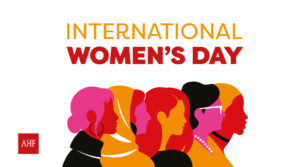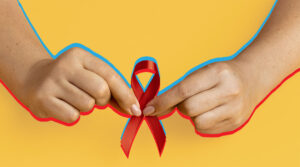The fact that the United States Food and Drug Administration (FDA) denied its approval to the vaginal ring that prevents HIV limits prevention options for women, stated an article published by researchers at Pace University in New York.
It should be remembered that at the end of 2021, the FDA informed the manufacturer that the vaginal ring, which contains the drug dapivirine, was not likely to be approved in the country “given the context of the current prevention landscape for women in the United States”, reported the specialized portal Aidsmap.com
A proven method
The vaginal ring is a small, flexible device, just like the contraceptive rings that have been on the market for several years. In the ring is “impregnated” the drug that is released little by little over a month, at which time it must be changed for a new one.
The effectiveness of this device has been demonstrated since 2016, although studies have shown a moderate level of effectiveness. However, a later study showed that, despite not being highly effective, the ring was well accepted and well tolerated by women.
This latest research, carried out on women in Africa, showed that the ring was able to reduce the risk of acquiring HIV by more than 39%. In that region of the world, which is the most affected by the HIV pandemic and where women and girls are the population most affected by these infections, more than 39% protection is a fairly acceptable number.
Claim
Faced with the rejection, the New York researchers called on the FDA to set the dangerous precedent of not accepting the device, since this could result in HIV infections that could have been avoided.
Already in September 2020, the European Medicines Agency (EMA) had issued a “positive opinion on risks and benefits”, as reported at the time by the Working Group on HIV Treatments (gTt-HIV). However, this was not a marketing approval, but seemed only to encourage the use of the ring in women in the countries most affected by the HIV pandemic.
And it is that although HIV pre-exposure prophylaxis (PrEP) is a much more effective preventive treatment than the ring, many women would prefer to use the device than take PrEP as it is currently available (taking a tablet that contains a cocktail of antiretroviral, once a day).
At that time in 2020, the World Health Organization (WHO) also gave a favorable opinion to the dapivirine vaginal ring, and this favored its approval in African countries such as South Africa and Zimbabwe.
Thus, the researchers told the FDA that it is not appropriate to base approval or disapproval of this ring on data from clinical trials. They added that there are several factors that are not taken into account in the studies but are relevant to women’s preferences for a preventive method. Among the advantages that they see in the ring are the control of its use, the side effects (which are less than with PrEP) and greater convenience (since it only has to be changed every month, and the change can be done by one user).
“A highly effective product that is not being used is worse than a moderately effective product that is widely used,” the Pace University researchers reasoned in an opinion piece published in the medical journal AIDS Education and Prevention. The authors also recalled that, each year, around 7,000 women are infected in the United States, of which the majority are of African or Latino origin.
Remember that, until now, the most accessible method to prevent HIV is the use of condoms, and at AHF Latin America and the Caribbean we have them for free. In addition, we perform HIV screening tests at no cost. Just come to one of our offices and learn about our services. We are in 11 countries in the region.






